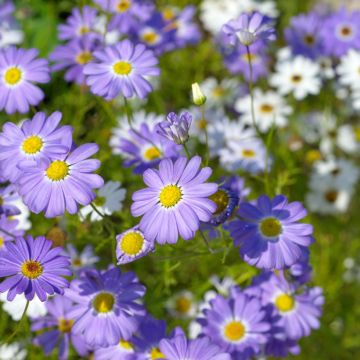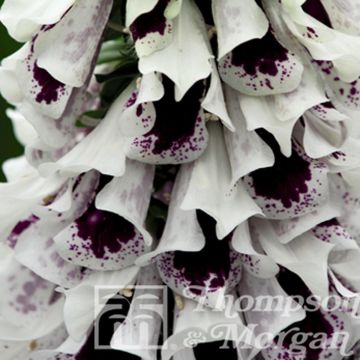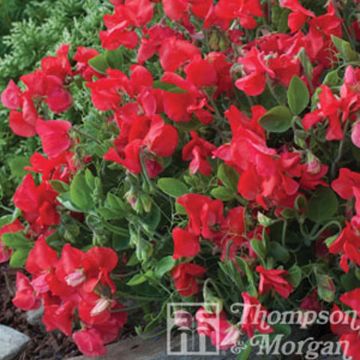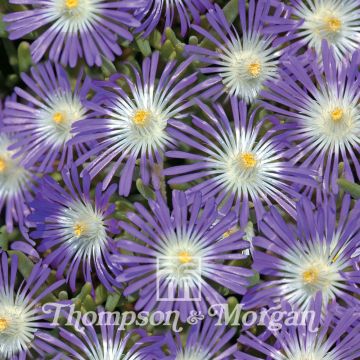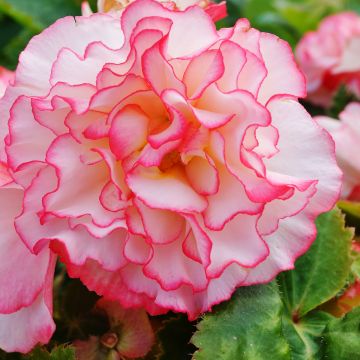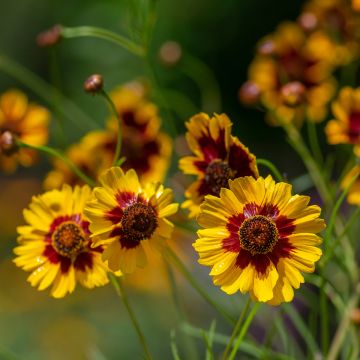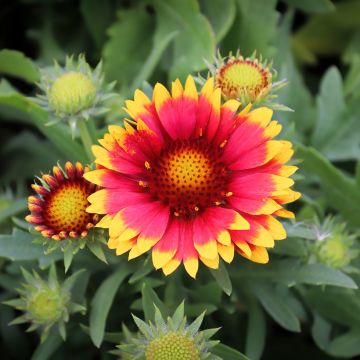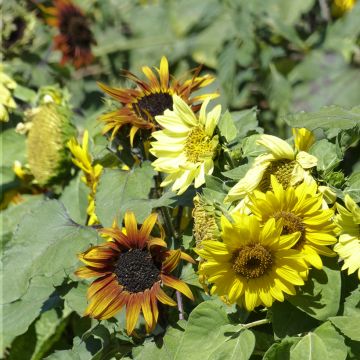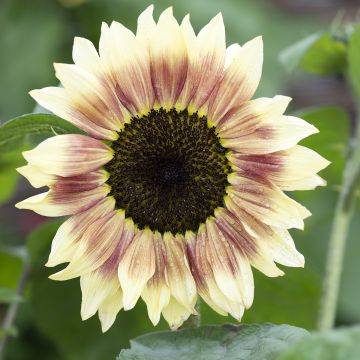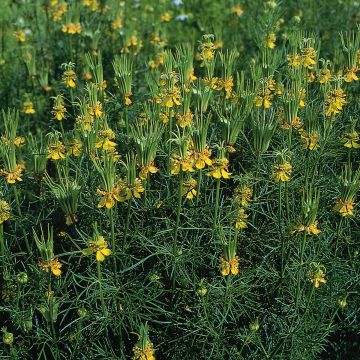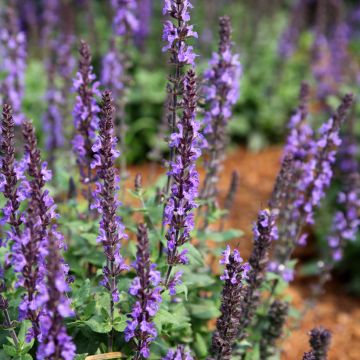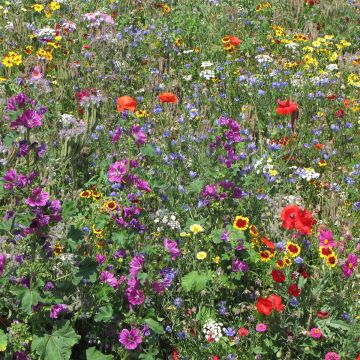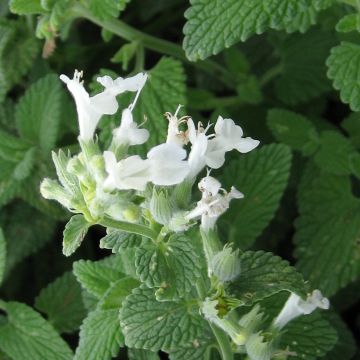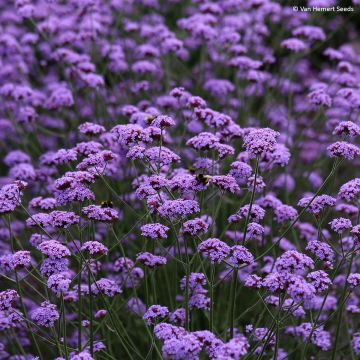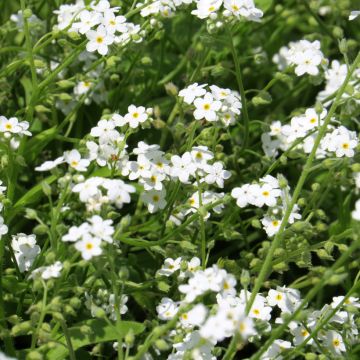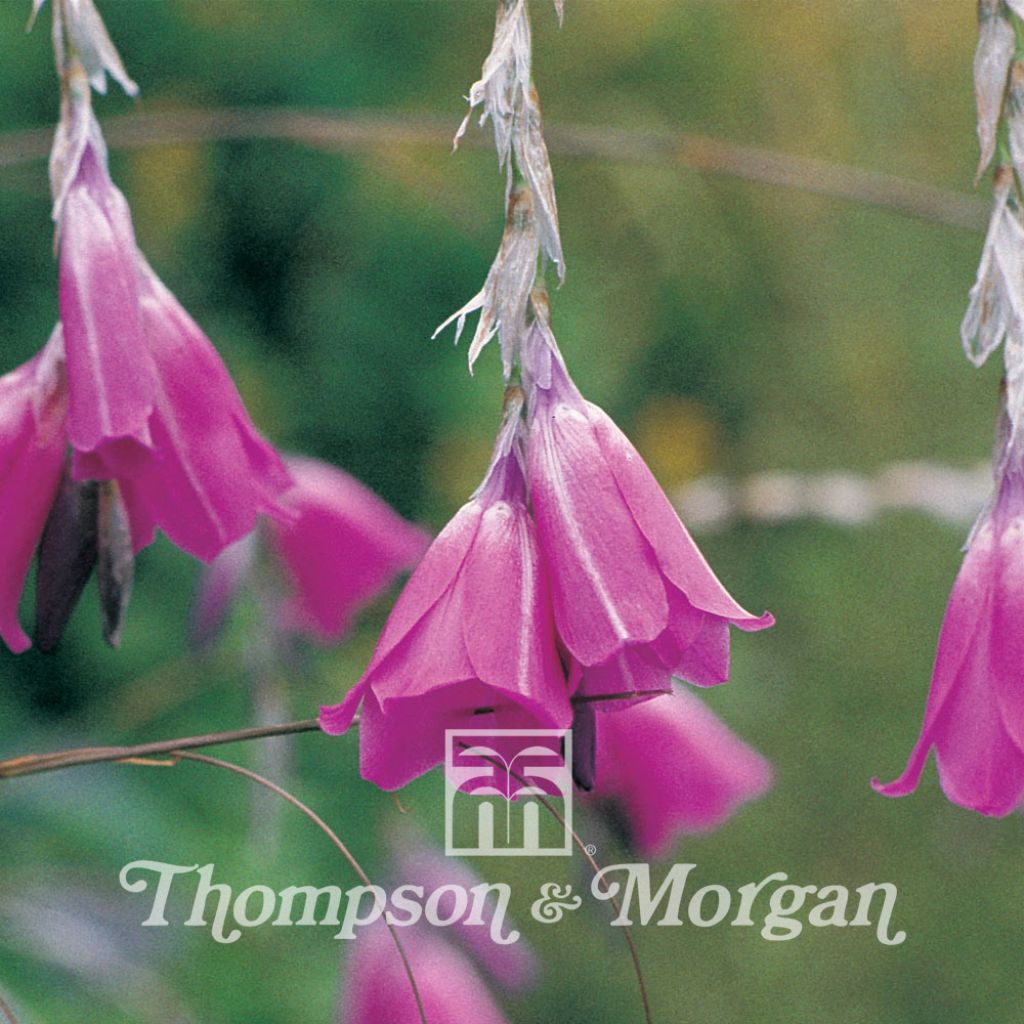

Dierama Pulcherrima Slieve Donard Hybrids
Dierama pulcherrima Slieve Donard Hybrids - Angels fishing rod seeds
Dierama pulcherrimum Slieve Donard Hybrids
Angel's fishing Rod, Wedding bells
This plant carries a 6 months recovery warranty
More information
We guarantee the quality of our plants for a full growing cycle, and will replace at our expense any plant that fails to recover under normal climatic and planting conditions.
Seed-only orders are dispatched by sealed envelope. The delivery charge for seed-only orders is €3.90.
Does this plant fit my garden?
Set up your Plantfit profile →
Description
This Dierama pulcherrimum 'Slieve Donard Hybrids', poetically called Angel's Fishing Rod, is a jewel for delicate gardens! Forming a tall tuft of ribbon-like foliage, this evergreen perennial blooms in summer with gracefully arching long inflorescences adorned with small pale or bright pink, red or violet bells, carried on aerial stems. It is a frost-sensitive plant, reserved for mild climates or attentive gardeners, but it provides a delightful sight to those who contemplate it. To be grown in full sun or partial shade, in deep, moist, rich, but well-drained soil.
Native to southern and eastern Africa, where it thrives in wet and marshy meadows, this cormous perennial plant belongs to the Iridaceae family, like garden irises or Crocosmias and Gladioli. The 'Slieve Donard Hybrids' selection produces plants with an upright tufted habit and tall, serrated ribbon-like leaves, measuring 90cm (35.4in) to 1.80m (5.9ft) in height, with a spread of 60 to 90cm (35.4in), depending on the climate and soil. The foliage is evergreen, and the plant can withstand temperatures down to about -7°C. The flowering, which is melliferous and nectariferous, occurs in summer, from June to August. Tall, slim and flexible stems emerge from the foliage, carrying long branched spikes adorned with small bell-shaped flowers that gracefully bend. They can be pale pink, brighter pink, carmine red or violet, depending on the plants, and open one after the other. The flowering is followed by the formation of fruits in small ovoid capsules containing numerous brown and hard seeds that need cold to break their dormancy. Dierama is a cormous plant, it possesses a flattened underground storage organ that presents itself in a chain, covered with a fibrous tunic. Plants grown from seeds take 5 to 7 years to flower, so it is best to avoid moving them as they do not appreciate transplantations.
Dierama pulcherrimum 'Slieve Donard Hybrids' is a perfect plant for coastal gardens. Install these plants in a consistently moist, even wet, but well-drained soil to ensure their survival in winter. They will grow alongside Astilbes, Vernonias, meadowsweet, and Ethiopian Arums. They are very graceful plants but a little capricious. Therefore, it is important to choose a sunny and sheltered location for them, cool in summer and dry in winter. They are perfect for swaying in the breeze in gardens with the appropriate climate in borders, mixed borders, flower beds, gravel gardens associated with grasses, near water features, or simply in pots.
Report an error about the product description
Flowering
Foliage
Plant habit
Botanical data
Dierama
pulcherrimum
Slieve Donard Hybrids
Iridaceae
Angel's fishing Rod, Wedding bells
East Africa
Other Thompson and Morgan seeds
Planting and care
Sow Dierama seeds from late winter to the end of summer, at 16-18°C, in a specific sowing compost.
Sow on the surface of the compost, burying the seeds just slightly. Keep the soil moist but not waterlogged. Do not exclude light. Enclose the sowings in a sealed polyethylene bag. Germination usually takes 1 to 6 months.
Transplant the young plants when they are large enough to be moved, and place them in cooler conditions, such as a cold frame. The young plants should spend the winter under a cold frame and be planted out in spring, after the frosts.
Respect a spacing of 30 to 60cm (23.6in) between plants. Choose a sunny exposure, deep, fertile, light and well-drained but still moist soil.
Cultivation:
Water if necessary during the growing season. In winter, it is essential that the soil is not waterlogged. Dierama dislikes lime. If grown in a pot, choose a rather acidic substrate, mixing heath soil, compost and loam. A spring fertilizer application is beneficial to support flowering.
Sowing period
Intended location
This item has not been reviewed yet - be the first to leave a review about it.
Flower seeds
Haven't found what you were looking for?
Hardiness is the lowest winter temperature a plant can endure without suffering serious damage or even dying. However, hardiness is affected by location (a sheltered area, such as a patio), protection (winter cover) and soil type (hardiness is improved by well-drained soil).

Photo Sharing Terms & Conditions
In order to encourage gardeners to interact and share their experiences, Promesse de fleurs offers various media enabling content to be uploaded onto its Site - in particular via the ‘Photo sharing’ module.
The User agrees to refrain from:
- Posting any content that is illegal, prejudicial, insulting, racist, inciteful to hatred, revisionist, contrary to public decency, that infringes on privacy or on the privacy rights of third parties, in particular the publicity rights of persons and goods, intellectual property rights, or the right to privacy.
- Submitting content on behalf of a third party;
- Impersonate the identity of a third party and/or publish any personal information about a third party;
In general, the User undertakes to refrain from any unethical behaviour.
All Content (in particular text, comments, files, images, photos, videos, creative works, etc.), which may be subject to property or intellectual property rights, image or other private rights, shall remain the property of the User, subject to the limited rights granted by the terms of the licence granted by Promesse de fleurs as stated below. Users are at liberty to publish or not to publish such Content on the Site, notably via the ‘Photo Sharing’ facility, and accept that this Content shall be made public and freely accessible, notably on the Internet.
Users further acknowledge, undertake to have ,and guarantee that they hold all necessary rights and permissions to publish such material on the Site, in particular with regard to the legislation in force pertaining to any privacy, property, intellectual property, image, or contractual rights, or rights of any other nature. By publishing such Content on the Site, Users acknowledge accepting full liability as publishers of the Content within the meaning of the law, and grant Promesse de fleurs, free of charge, an inclusive, worldwide licence for the said Content for the entire duration of its publication, including all reproduction, representation, up/downloading, displaying, performing, transmission, and storage rights.
Users also grant permission for their name to be linked to the Content and accept that this link may not always be made available.
By engaging in posting material, Users consent to their Content becoming automatically accessible on the Internet, in particular on other sites and/or blogs and/or web pages of the Promesse de fleurs site, including in particular social pages and the Promesse de fleurs catalogue.
Users may secure the removal of entrusted content free of charge by issuing a simple request via our contact form.
The flowering period indicated on our website applies to countries and regions located in USDA zone 8 (France, the United Kingdom, Ireland, the Netherlands, etc.)
It will vary according to where you live:
- In zones 9 to 10 (Italy, Spain, Greece, etc.), flowering will occur about 2 to 4 weeks earlier.
- In zones 6 to 7 (Germany, Poland, Slovenia, and lower mountainous regions), flowering will be delayed by 2 to 3 weeks.
- In zone 5 (Central Europe, Scandinavia), blooming will be delayed by 3 to 5 weeks.
In temperate climates, pruning of spring-flowering shrubs (forsythia, spireas, etc.) should be done just after flowering.
Pruning of summer-flowering shrubs (Indian Lilac, Perovskia, etc.) can be done in winter or spring.
In cold regions as well as with frost-sensitive plants, avoid pruning too early when severe frosts may still occur.
The planting period indicated on our website applies to countries and regions located in USDA zone 8 (France, United Kingdom, Ireland, Netherlands).
It will vary according to where you live:
- In Mediterranean zones (Marseille, Madrid, Milan, etc.), autumn and winter are the best planting periods.
- In continental zones (Strasbourg, Munich, Vienna, etc.), delay planting by 2 to 3 weeks in spring and bring it forward by 2 to 4 weeks in autumn.
- In mountainous regions (the Alps, Pyrenees, Carpathians, etc.), it is best to plant in late spring (May-June) or late summer (August-September).
The harvesting period indicated on our website applies to countries and regions in USDA zone 8 (France, England, Ireland, the Netherlands).
In colder areas (Scandinavia, Poland, Austria...) fruit and vegetable harvests are likely to be delayed by 3-4 weeks.
In warmer areas (Italy, Spain, Greece, etc.), harvesting will probably take place earlier, depending on weather conditions.
The sowing periods indicated on our website apply to countries and regions within USDA Zone 8 (France, UK, Ireland, Netherlands).
In colder areas (Scandinavia, Poland, Austria...), delay any outdoor sowing by 3-4 weeks, or sow under glass.
In warmer climes (Italy, Spain, Greece, etc.), bring outdoor sowing forward by a few weeks.

































